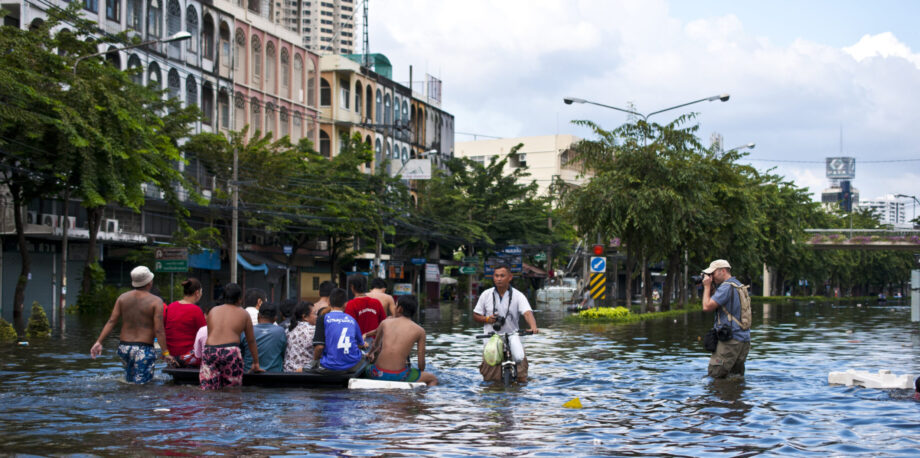October 22, 2024 — The headlines scream about war, crime, political strife, economic woes. But underlying it all — and more and more often bubbling to the top — is what future historians will likely look back and call the story of this century: Climate change.
Recognizing the importance of this pervasive phenomenon, Covering Climate Now, Columbia Journalism Review, the Solutions Journalism Network, The Guardian and The Nation last fall brought together more than 200 journalists from around the world to develop a plan for better reporting on this critical but often-sidelined topic.
A recently released synopsis of their work, Climate Blueprint for Media Transformation, offers journalists 14 tips for reporting on this critical topic.
1. Engage across beats
Climate affects everyone and everything — and climate change reporting should reflect that. Help colleagues of all ilks incorporate climate into their reporting, connecting it with audience members’ everyday concerns and real-life experiences.
2. Connect with communities
Take time to engage those affected by or featured in your reporting in a respectful way. Focus on people rather than deadlines.
3. Use images
When it comes to climate change, visuals truly are worth a thousand words. Photos and graphics can make stories personal and help clarify complex concepts.
4. Center justice
Consider culture and entrenched inequalities. Include affected individuals as expert sources and ensure they can access the results of your reporting.
5. Avoid propagating misinformation
Misinformation and disinformation abound in the climate sphere. Pay attention to who or what is behind the message. Query claims about solutions.
6. Attend to activism
Citizen action is an important part of the climate story. Treat protests as serious news. Carefully consider the choice of words you choose to describe the issue and the action.
7. Take care of yourself and colleagues
Climate change is a traumatizing topic that can harm mental health. Work to ensure that you and your newsroom have the resources needed to deal with the stress of climate reporting.
8. Consider the bigger picture
Proximate causes of harm such as fossil-fuel burning are an important part of the story, but so are entrenched systems that create and perpetuate vulnerability.
9. Connect with diverse experts
Cultivate skills for tapping scientific expertise from a variety of institutions. Scientists beyond “the usual suspects” can offer important insights.
10. Embrace the local angle
Every community and every individual has a climate story. Tell the broader story in the context of the place people live, work and play.
11. Assess impact
Check in with your audience to assess the impact of your reporting. Recognize that change is incremental and that shifts in intent and sentiment matter.
12. Team up
Collaborate with colleagues at other outlets to maximize your impact while making the most of limited resources.
13. Reach out for resources
Identify and tap funding that allows you to bring climate stories to light. Focus on topic areas and opportunity for impact for the best results.
14. Proactively include climate in coverage
To keep the drumbeat going, advocate for making climate stories a priority for your newsroom. Stay alert for potential stories. Allocate resources and cultivate relationships with experts so they’re available when needed.
“News coverage that shows the public its role and power is an essential climate solution,” the organizers noted in presenting the results of the convocation. “[W]ith climate impacts worsening fast and most governments and companies still dawdling, journalists must innovate and redouble commitments to climate storytelling.”
Related Posts
Ensia shares solutions-focused stories free of charge through our online magazine and partner media. That means audiences around the world have ready access to stories that can — and do — help them shape a better future. If you value our work, please show your support today.
Yes, I'll support Ensia!



